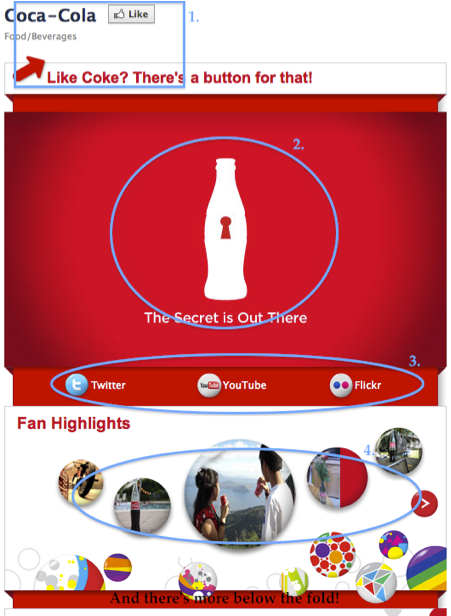Facebook Canvas App Bug – Should You Have Been Concerned?
August 22nd, 2011 by
On August 11, Facebook was voted as the worst API for developers, in part due to “APIs that… break frequently.” Just the day before, a bug was reported regarding the function of landing pages on Facebook Fan Pages. Canvas Apps, the ones governing FBML and iFrame tabs, are becoming a common way to apply the same concepts as landing pages for PPC ad campaigns to your social media marketing toolset. These pages act as conversion funnels, acquiring social engagement through likes, which spread the brand through “organic” and “paid” social marketing — newsfeed stories and social reach for display of ads. However, highly desirable leads can come from these Facebook Canvas Apps because of a key function.
When a new visitor to the Facebook Page arrives, instead of visiting the page’s wall which may have a chaotic dialogue and brand message, he sees a branded tab with a clear call to action and a variety of “toys” to play with — videos, viral content, and user-generated content. When the user Likes the Facebook page (if it’s not bugged up), he’d stay on the tab to interact with more content before moving on. When he returns, the visitor would reach the Wall for the Facebook Page.
For slightly over a week, the user would Like the page on the Canvas App tab, then would immediately go to the Wall, bypassing the ability to immediately remarket to the user. A “Thank You for Liking Us” tab can have an immediate payoff for the visitor in the form of links, RSS feeds, or other sharable content, and solicit him for his information by filling out a contact form. This kind of progressive funneling drives highly desirable leads to a website: since they already were engaged enough with your brand to Like your page, they will be more likely to contact you for what they were searching on Facebook.


1. Call to action. 2. Pulled in by brand/mysteriousness
3. Share in other ways. 4. UGC
Using Coca-Cola’s page as an example, there are four features of a Canvas App tab that increase conversions for the first half of the funnel — the Like.
- A direct call to action with a prominent arrow will bring attention to the point of conversion. Coke probably doesn’t need to focus so hard on getting people to Like them given the brand recognition, so more creative copy than that may be needed.
- Offer some kind of secret sauce, a benefit for liking the page. I was fooled into hoping for at least an ad about the secret recipe — more direct benefits would be needed for a brand that isn’t already a 12-pack in my refrigerator.
- Providing links to other social networks seems counter-intuitive as it takes the user away from the page. However, with opening the page in a new tab in the browser, you keep the viewer on the Facebook Page while offering a new place to share your brand message.
- A set of editors picks of user-generated content reinforces brand interaction on Facebook. Coke’s prioritizing of this content above branding or further lead generation could a sign of their focus on social branding over other methods of funneling social action.
At the core of any news story is its effect on the reader’s business. As Facebook seems to count each Canvas App tab view before and after the like, you can find a rather direct metric of which tabs were affected worst under Insights>Users>Activity. Furthermore, if you’re tracking your Facebook tabs with cross-domain tracking or your tabs’ links with referral tracking encoded in the url, you’ll be able to look at Google Analytics or your tracking software and determine more specifically the effects on your campaign by searching the Content Drilldown.
At the core of any discussion of unexpected downtime is the allowance for such downtimes in your marketing and advertising plans. Either by focusing on long-term gains or by re- or proactively acting on the acknowledged bugs in the Facebook Bug List, you’ll be able to weather the storm of any accidentally lost functionality.

